
15311826613
Click to add WeChatWith the continuous development of tungsten mines, the reserves of high-grade wolframite are becoming less and less, but my country's demand for tungsten has not decreased, but has increased day by day. Therefore, low-grade, fine-grained wolframite and tailings containing tungsten fine mud have great development significance. For this type of wolframite, the selection of beneficiation technology is very important to improve the utilization rate of tungsten resources. Let's take a look at the common Wormite beneficiation methods?
At present, the commonly used beneficiation methods for wolframite are mainly gravity separation, and according to the different impurities contained in the mineral, there are also magnetic separation and flotation.
The density of wolframite is usually 19250kg/m3, which is quite different from gangue minerals. Gravity separation can be used to effectively obtain qualified wolframite concentrate. There are several methods, including shaking table method, centrifugal separation method and chute method.
Before the shaking table is used to select wolframite, the mineral particle size needs to be hydraulically classified. Then, according to the different particle sizes of the ore, the shaking table is divided into three operations: coarse sand shaking table, fine sand shaking table and ore mud shaking table. Among them, the particle size range of wolframite treated by the coarse sand shaking table is 0.5-2mm; the particle size range of wolframite treated by the fine sand shaking table is 0.2-0.5mm; the particle size range of the ore mud is less than 0.2mm. Although the investment cost of the shaker table gravity separation of wolframite is low and the process flow is simple, the recovery effect of fine-grained mineral particles is not ideal. If you want to improve it, you need to use it in a combined beneficiation method with other equipment.
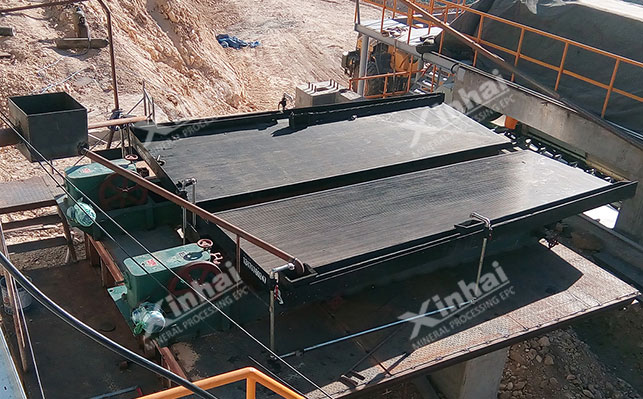
The centrifugal beneficiation method processes fine-grained wolframite. The centrifugal force of the centrifugal equipment and the slope of the drum wall cause it to be stratified, thereby achieving separation. The lower limit of the particle size recovered by the centrifugal concentrator can reach 0.01mm. It has a large processing capacity, stable operation, and convenient operation. When the centrifugal concentrator processes wolframite, the fine mud is generally first coarsely and finely graded. The +0.037mm particle size is separated by a shaking table, and the -0.037mm particle size is first roughly separated by a centrifugal concentrator. The coarse concentrate is desulfurized by a belt chute or flotation to improve the grade. The recovery rate of tungsten concentrate can generally be increased to 46%~60%.
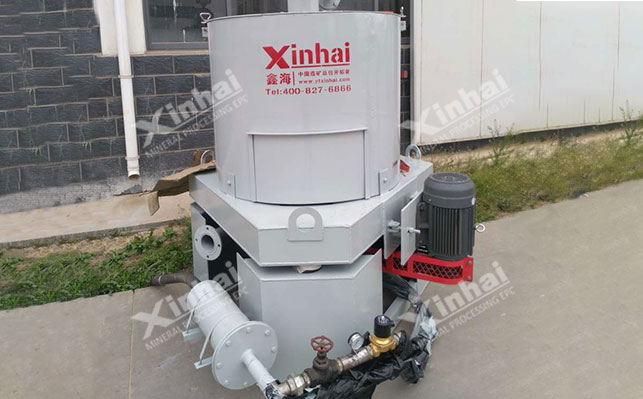
The equipment used for wolframite chute separation is a spiral chute. After the slurry is sent into the chute, the solid particles first stratify in the process of moving along the chute. Under the combined action of centrifugal force and secondary circulation pointing to the outer edge, low-density particles move horizontally to the outer edge, while high-density particles move to the inner edge, thereby separating the two. The spiral chute can effectively reduce the tungsten content of tailings as a tungsten fine mud sweeping equipment, and the effect is better when combined with other gravity separation equipment.
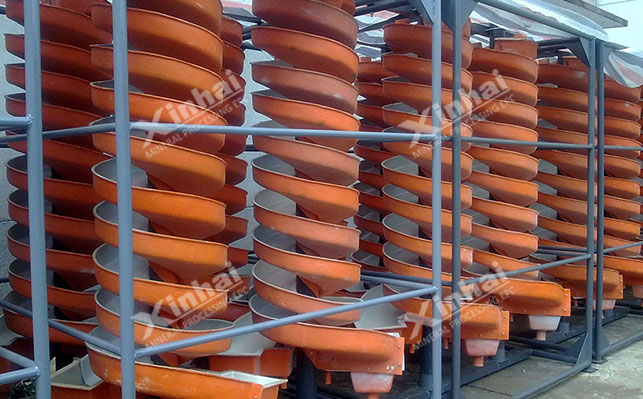
Wormite has a certain weak magnetism, so it can be separated from non-magnetic minerals by strong magnetic separation, and high-gradient strong magnetic separation is often used. The direction of each group of magnetic media washing ore in the magnetic separator is opposite to the direction of feeding ore, and a high-frequency vibration mechanism of ore pulp is set at the same time, so that the mineral particles in the ore pulp are always in a loose state under the action of pulsating fluid force. When the raw ore is graded and selected, the magnetic medium vibrates, and then the magnetic wolframite in the loose mineral is adsorbed, and then the separation is completed. In addition, there are two types of wet magnetic separators and dry magnetic separators, which are generally used in conjunction with flotation as rough selection and recovery operations for tungsten fine mud.
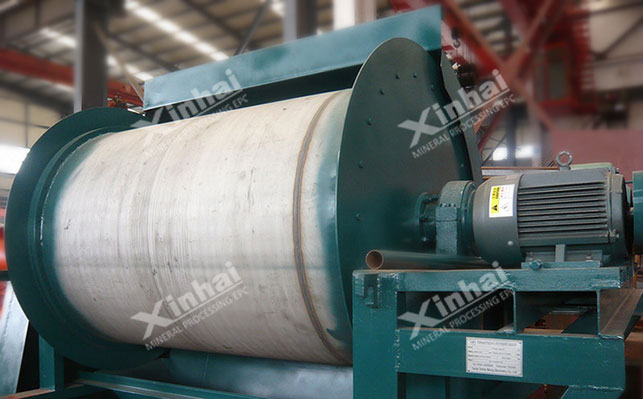
Flotation wolframite mostly processes fine mud tungsten. Depending on the different mineral properties, the selected flotation methods are also different. Common methods include selective flocculation flotation, carrier flotation, shear-flocculation flotation and other methods.
Selective flocculation flotation of wolframite is to flocculate useful minerals into agglomerates under the action of selective flocculants, thereby separating them from dispersed gangue minerals. This method requires that the slurry is in a strong stirring state, and pH adjusters and dispersants need to be added to keep the gangue minerals in a dispersed state. The selective flocculation process is simple.
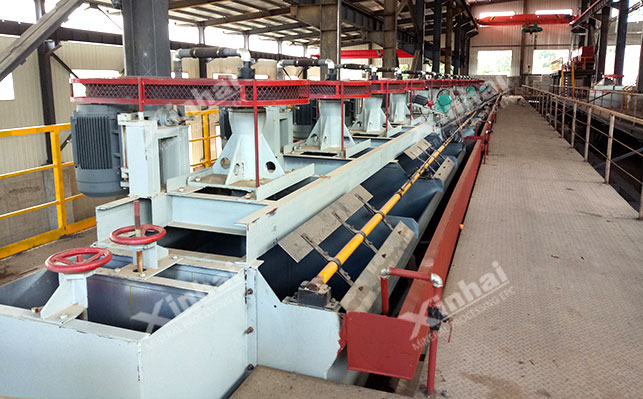
Carrier flotation of wolframite is to make fine-grained particles selectively attached to the mineral carrier, and then add a collector to make the coarse-grained carrier float. This method has a simple process, but requires a carrier that is easy to recycle and inexpensive, and requires a single target mineral in the selection process, which is generally not used alone.
Oil agglomeration flotation of wolframite is to add neutral oil to make useful mineral particles agglomerate under the action of bridging to form larger spherical flocs, and then select fine-grained minerals to reduce the water content of its slurry. This process requires a large amount of reagents, which will greatly increase production costs and is rarely used.
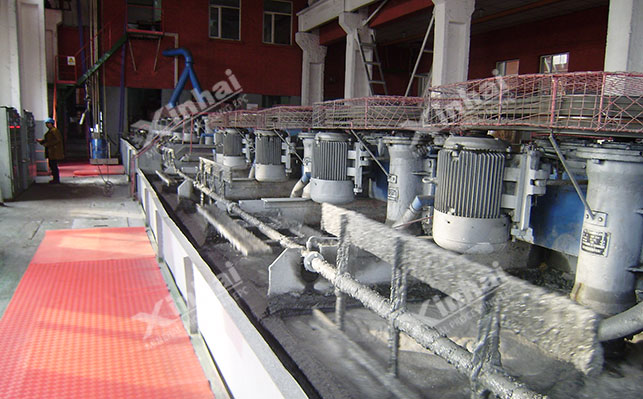
Shear flocculation-flotation wolframite is to form fine-grained wolframite hydrophobic flocs under the combined action of strong stirring and collectors to achieve flotation separation. At a stirring speed of 1650r/min, sodium oleate is used to flotate the -5mm wolframite and quartz mixed ore. The concentrate grade is 9.24% higher than conventional flotation and the recovery rate is 25.58% higher. However, the high stirring speed of this method will increase the cost of mineral processing.
Combined mineral processing method is a combination of two or more processes consisting of gravity separation, flotation and magnetic separation. Common ones include gravity separation-flotation combined method and strong magnetic separation-flotation combined method. In addition, there are some new combined mineral processing methods, which are not repeated here.
This process uses gravity separation equipment (centrifuge or shaking table) to perform rough separation of tungsten fine mud, and then floats the coarse concentrate, which can effectively improve the concentrate grade and recovery rate. This method can give full play to the role of gravity separation equipment, no longer grading, and has a large processing capacity. Rough separation can select ore particles with a lower limit of particle size of 10 m, and the tungsten recovery rate can reach 65%.
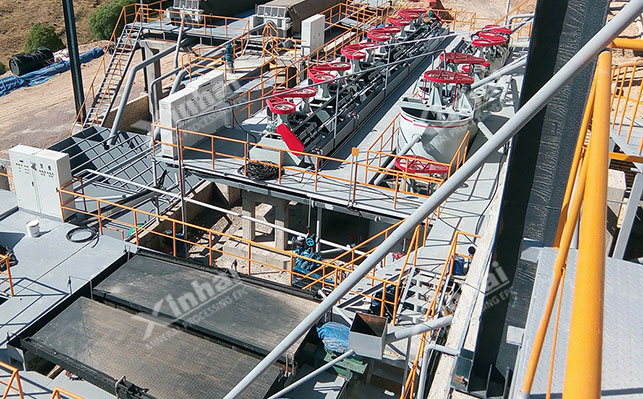
This process concentrates the fine mud and then conducts wet strong magnetic separation to discard the tailings. After the strong magnetic concentrate is desulfurized by adding sulfide ore flotation reagent, wolframite flotation reagent is added to select tungsten ore. At present, this process is adopted by many tungsten concentrators. However, wolframite containing more sulfide ore and scheelite is not applicable. In addition, the magnetic concentrate needs to be concentrated and dehydrated before flotation, and the selection cost is relatively high.
The above mainly introduces the four major methods of wolframite selection. In the actual selection process, wolframite is mainly gravity-selected, with flotation and magnetic separation as auxiliary processes to complete the selection of fine-grained wolframite. How to use and select its process scheme depends on the ore properties of wolframite. Therefore, it is recommended to conduct a mineral processing test and design a suitable wolframite selection process through experimental analysis.